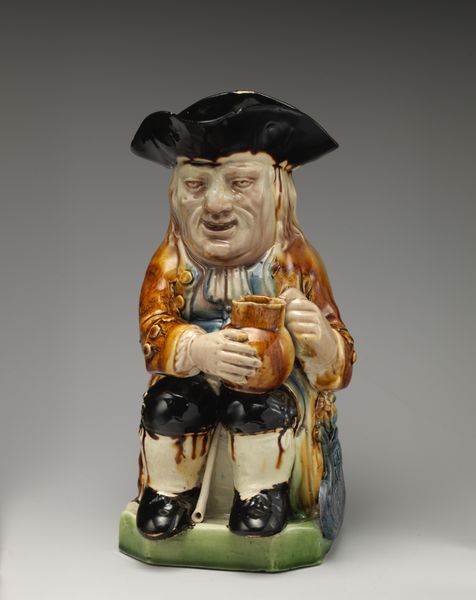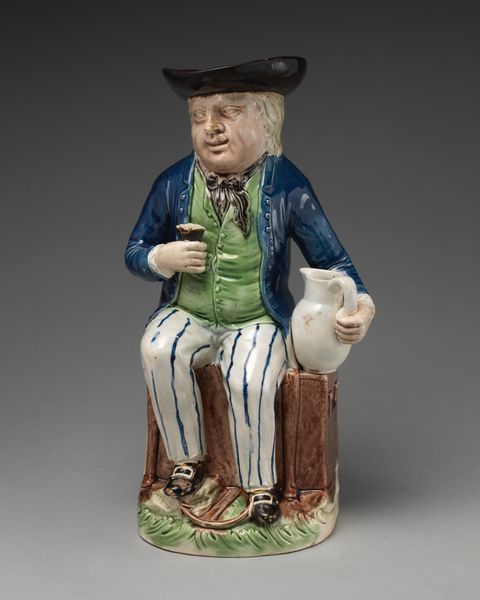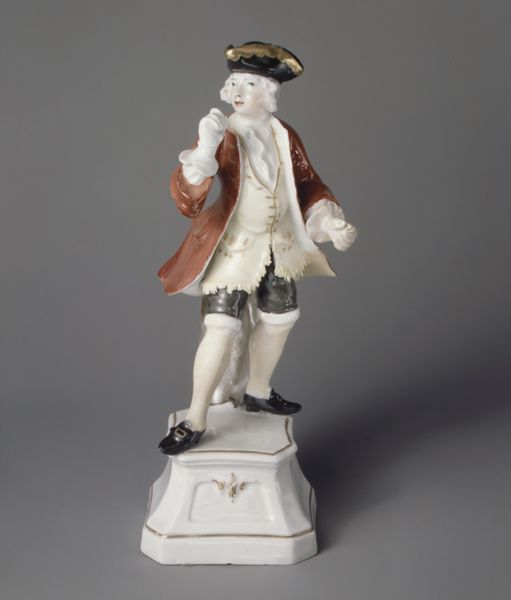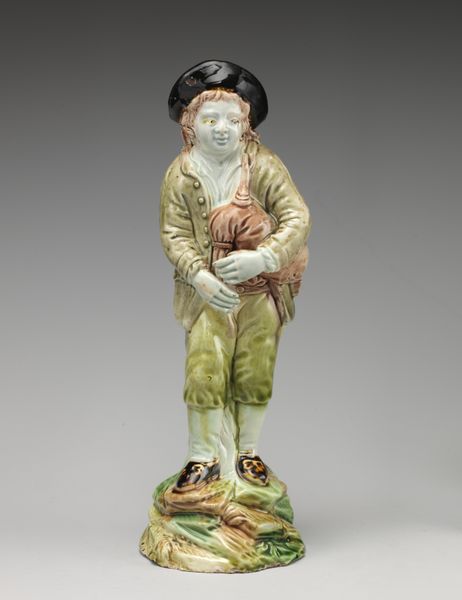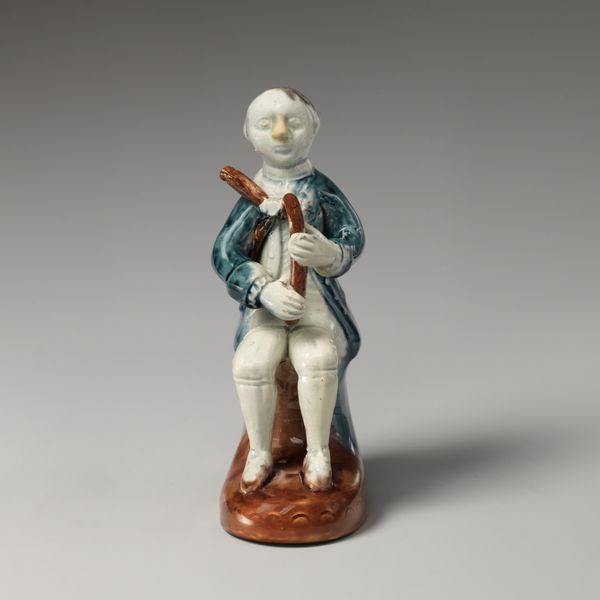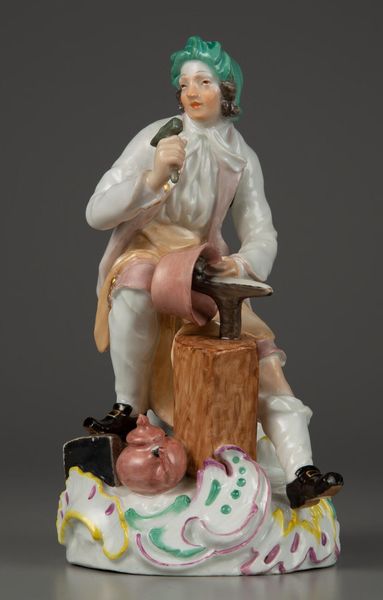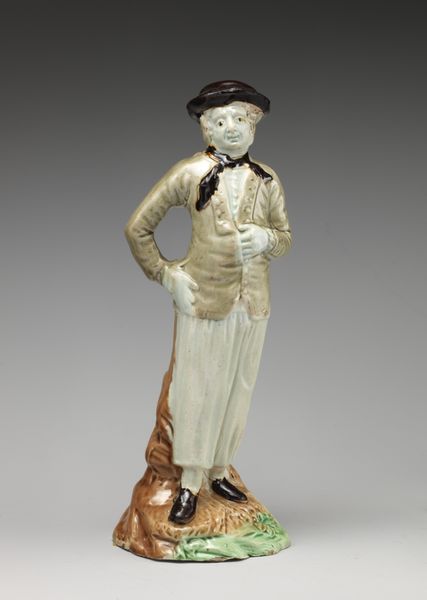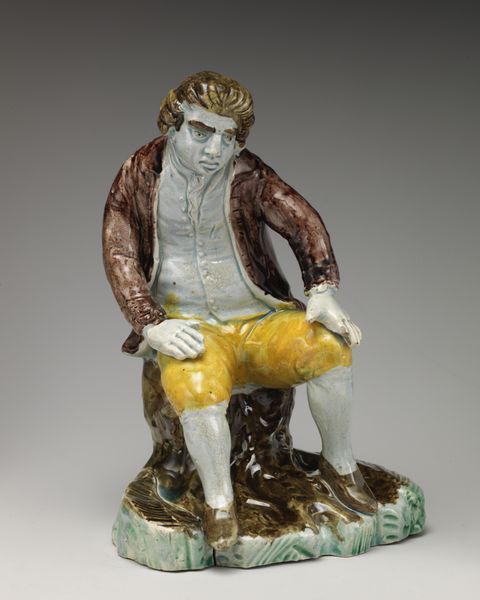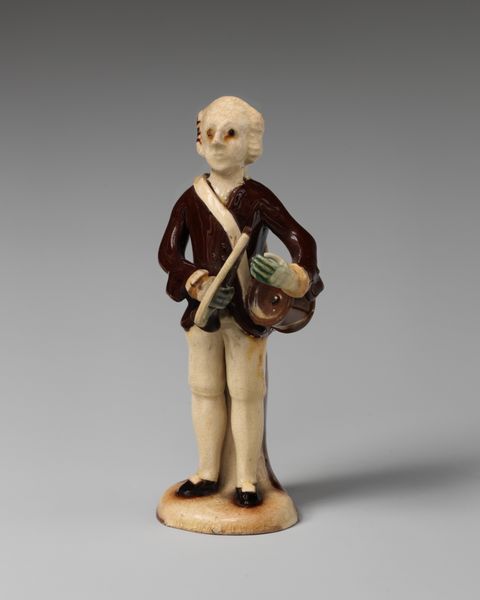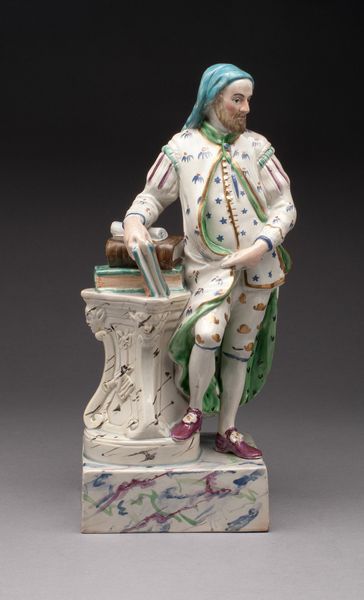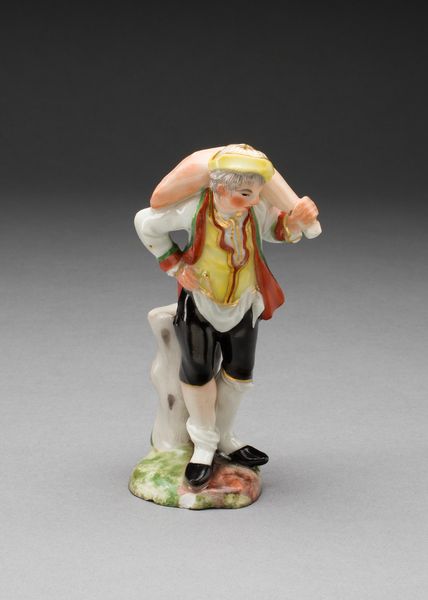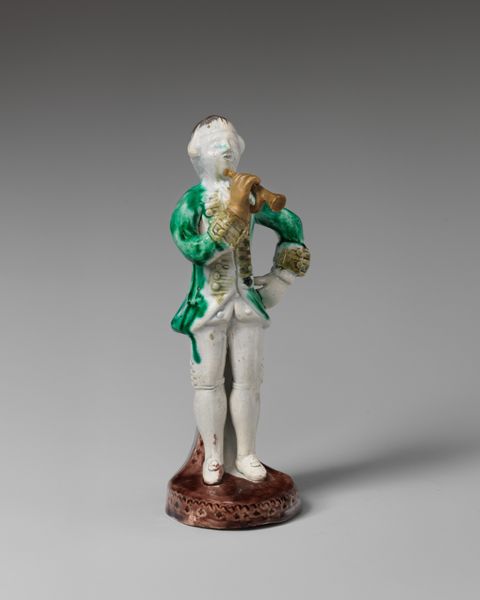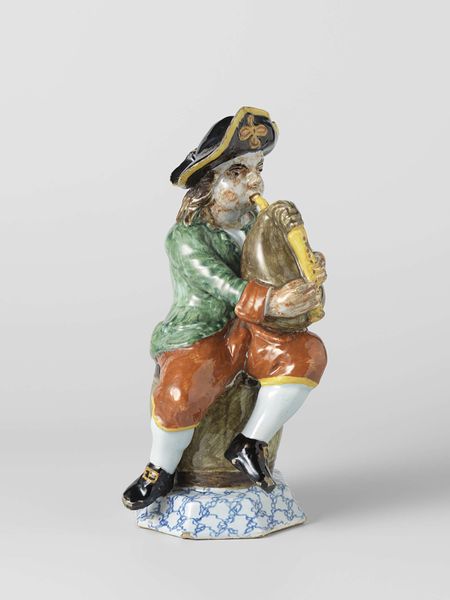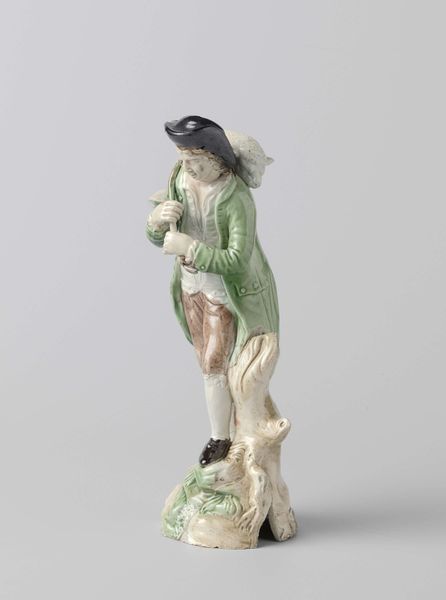
ceramic, sculpture
#
portrait
#
ceramic
#
sculptural image
#
figuration
#
folk-art
#
sculpture
#
men
#
genre-painting
#
decorative-art
Dimensions: Height: 9 5/8 in. (24.4 cm)
Copyright: Public Domain
Curator: What a whimsical object! This is a Toby jug, created by Ralph Wood the Younger, sometime between 1765 and 1785. Currently, it resides at the Metropolitan Museum of Art. It's ceramic. Editor: My first impression is of conviviality—or perhaps inebriation. The rosy cheeks, the jovial expression... He's utterly absorbed in that jug, isn't he? Is it a commentary on Georgian-era drinking culture? Curator: From a formal perspective, note the interplay of textures: the smooth glaze of his coat, juxtaposed against the matte finish of the wig and the frothy appearance of whatever fills his jug. The subtle palette of cream, brown, and black reinforces its grounding in functional, rather than purely aesthetic, design. The repetition of curves, in the barrel and his posture, also create visual harmony. Editor: But that harmony is deceptively benign! Think about the social context—England’s emerging middle class, readily embracing consumerism and... alcohol. These jugs become symbolic objects of bourgeois self-fashioning. How many people could afford art like this? And for those who could, it was about reinforcing their class status through carefully selected, sometimes problematic, decor. Also, notice the little dog at his feet – does this emphasize leisure and wealth? Curator: Intriguing point. Consider the dynamic relationship between volume and void, too. The jug occupies a space somewhere between sculpture and functional object. He’s literally hugging his drink. There’s very little negative space between his arms and the jug itself, thereby accentuating the intimacy of that action. Editor: And it makes us question—what is he holding so close? Access, privilege, and power distilled into liquid form, perhaps. It forces us to consider what gets left out of these rosy depictions of 18th-century life – the exploitation, the inequality, the colonial enterprise that financed this excess. It makes one want to smash the jug. Curator: Well, let’s not! Instead, perhaps we can appreciate its craftsmanship while reflecting on the social complexities it embodies. Editor: Agreed. It's a reminder that even the most seemingly innocuous objects can be potent cultural artifacts that are representative of larger problems.
Comments
No comments
Be the first to comment and join the conversation on the ultimate creative platform.
